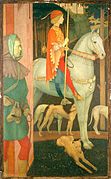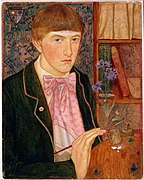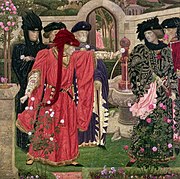
The Arts and Crafts movement was an international trend in the decorative and fine arts that developed earliest and most fully in the British Isles and subsequently spread across the British Empire and to the rest of Europe and America.
Conroy Maddox was an English surrealist painter, collagist, writer and lecturer; and a key figure in the Birmingham Surrealist movement.
The British Surrealist Group was involved in the organisation of the International Surrealist Exhibition in London in 1936.
Emma Frith Bridgwater, known as Emmy Bridgwater, was an English artist and poet associated with the Surrealist movement.

Birmingham Guild of Handicraft was an Arts and Crafts organisation operating in Birmingham, England, established at the end of the 19th century.

Joseph Edward Southall RWS NEAC RBSA was an English painter associated with the Arts and Crafts movement.
The Birmingham Surrealists were an informal grouping of artists and intellectuals associated with the Surrealist movement in art, based in Birmingham, England from the 1930s to the 1950s.
Oscar Mellor was an English surrealist artist and publisher of poetry. An associate of the Birmingham Surrealists in the 1940s, he founded the Fantasy Press in the 1950s, publishing works by poets such as Philip Larkin, Kingsley Amis and Thom Gunn.

Charles March Gere RA RWS was an English painter, illustrator of books, and stained glass and embroidery designer associated with the Arts and Crafts movement.

Henry Albert Payne RWS, also known as "Henry Arthur Payne", was a British stained glass artist, watercolourist and painter of frescoes.
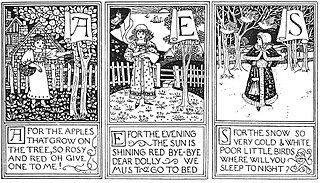
Georgina Evelyn Cave Gaskin, known as Georgie Gaskin, was an English jewellery and metalwork designer as well as an illustrator.
The Birmingham Artists Committee was an English artist collective that organised exhibitions of painting and sculpture in Birmingham between 1947 and 1952.

Arthur Joseph Gaskin RBSA was an English illustrator, painter, teacher and designer of jewellery and enamelwork.

Maxwell Ashby Armfield was an English artist, illustrator and writer.
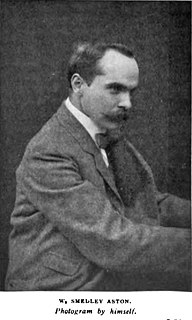
William Smedley-Aston (1868–1941) was with his wife Irene a Victorian Pre-Raphaelite Arts & Crafts photographer and member of the Birmingham Group of artists and the Linked Ring Brotherhood. He was also known as W. S. Aston or W. Smedley.

Birmingham has a distinctive culture of art and design that emerged in the 1750s, driven by the historic importance of the applied arts to the city's manufacturing economy. While other early industrial towns such as Manchester and Bradford were based on the manufacture of bulk commodities such as cotton and wool, Birmingham's economy from the 18th century onwards was built on the production of finished manufactured goods for European luxury markets. The sale of these products was dependent on high-quality design, and this resulted in the early growth of an extensive infrastructure for the education of artists and designers and for exhibiting their works, and placed Birmingham at the heart of debate about the role of the visual arts in the emerging industrial society.
The Ruskin Galleries was a private art gallery located in what is now Chamberlain Square in Birmingham, England between 1925 and 1940. It provided a venue for the exhibition of modern art at a time when Birmingham's other major artistic institutions were marked by a high degree of artistic conservativism.
Edith Rimmington, was an English artist, poet and photographer associated with the Surrealist movement.

Mary Jane Newill (1860–1947) was an English painter, embroiderer, teacher, book illustrator and stained glass designer associated with the Arts and Crafts Movement. As a stained glass artist, she was a disciple of stained glass designer, Selwyn Image. Newill was a member of the Birmingham Group, an informal group of artists and craftsment that worked in Birmingham, England.



